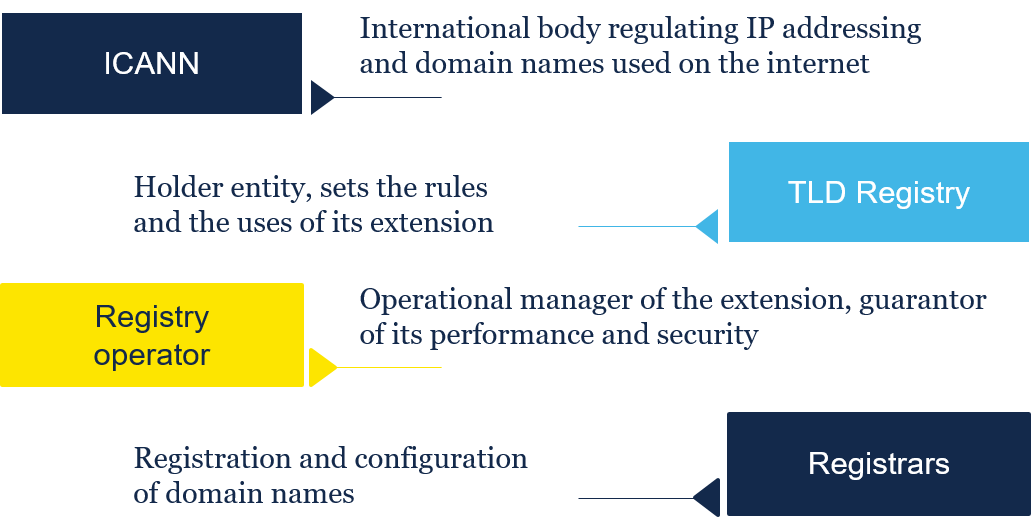Let’s take a look at the various actors involved in setting up a custom TLD:

And more particularly the role of the back-end registry operator (BERO).
This key actor can be involved right from the outset, helping the future holder of the custom TLD prepare their application to ICANN and answering all the technical questions involved in the application. Some BEROs go further in their support, using their vast experience to help applicants draw up the business plan for the future TLD, a vital part of the application process.
During ICANN’s assessment of the application, the BERO can also help reply to any additional questions ICANN may ask on technical aspects.
Once ICANN has approved the application, the BERO takes on a greater role, configuring the infrastructure of the future TLD and preparing for the ICANN technical tests. These tests are an essential part of the process, which an experienced BERO will manage with a 100% success rate.
Once the technical tests have been validated, it’s time to launch the new TLD. Here too the role of the BERO is crucial, since it is the BERO that will bring the new TLD to life. The BERO will make all the necessary technical declarations to ICANN and the IANA* so that all that’s left to do is to “press the button” on D-Day and publish the first domain names of the new TLD while at the same time allowing its infrastructure to be managed.
The BERO will then keep a daily watch on the proper functioning of the TLD on the technical front: publication of the zone, DNS resolution, registration of domain names, operations on domain names, Whois consultations, escrow production and sending, etc. in full compliance with the service levels and rules imposed by ICANN.
It may also accompany the new registry in assuming its role, by giving advice on its organisation, the implementation of its business plan, and so on.
So the back-end registry operator is the actor that brings a TLD to life from a technical standpoint. It is also the actor most interfaced with the others on a daily basis: it is in contact with ICANN to manage the required service levels and application of the rules, entrusts the zone data to the escrow operator every day, provides the necessary interfaces to the registry and registrars for management of the TLD and its domain names, and can also provide support to the registry and registrars in the various stages of the life of the TLD.
Make sure to address the following points when choosing your back-end registry operator:
- Handling of personal data: with the application of the GDPR since May 2018, having data handled by an operator whose services are based in the European Union is a good guarantee of compliance with the Regulation.
- DNS resolution services: does the provider have an Anycast cloud? Does it make IPV6 addressing available?
- Security services: does the provider offer a registry lock? How is authentication carried out on the interfaces made available to the registry and registrars?
- Monitoring of abuse: does the provider make an abuse management service available in accordance with ICANN requirements?
So there you are, you now know all there is to know, or nearly, about back-end registry operators, the keystone of any TLD. Feel free to ask any questions in ‘Le Cercle des .marque’ [‘The BrandTLD Club’] to learn more about these vital actors, of which Afnic is currently the only French representative.
Le Cercle des .marque [The BrandTLD Club]
In 2019, Afnic launched ‘Le Cercle des .marque’ [‘The BrandTLD Club’], a forum reserved for brands and their representatives interested in custom TLDs. Inspiring testimonials, sharing of best practices, deciphering the market and the latest trends… a place to discuss the development and control of your digital territory.
*IANA: Internet Assigned Numbers Authority, ICANN department that manages the root zone





